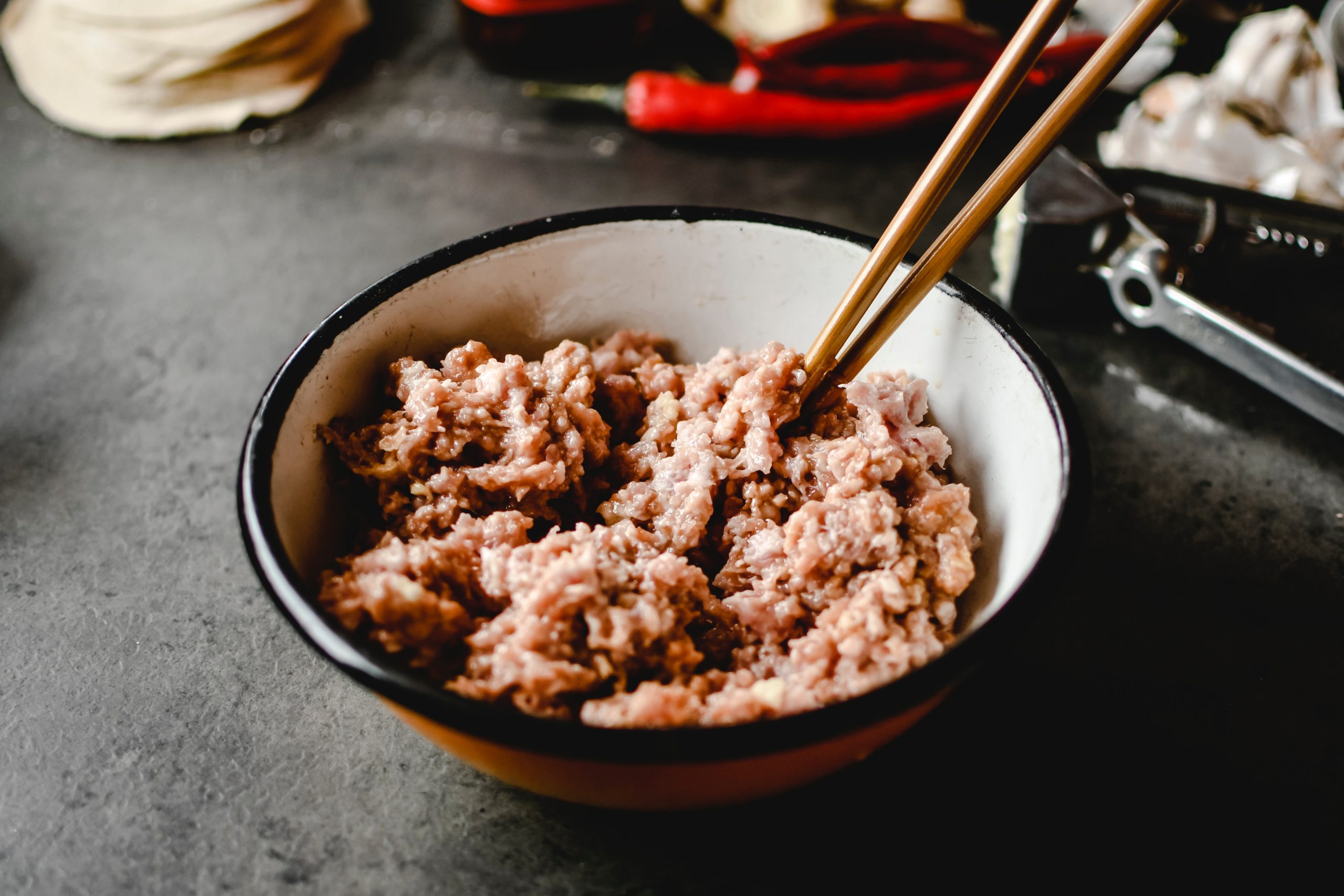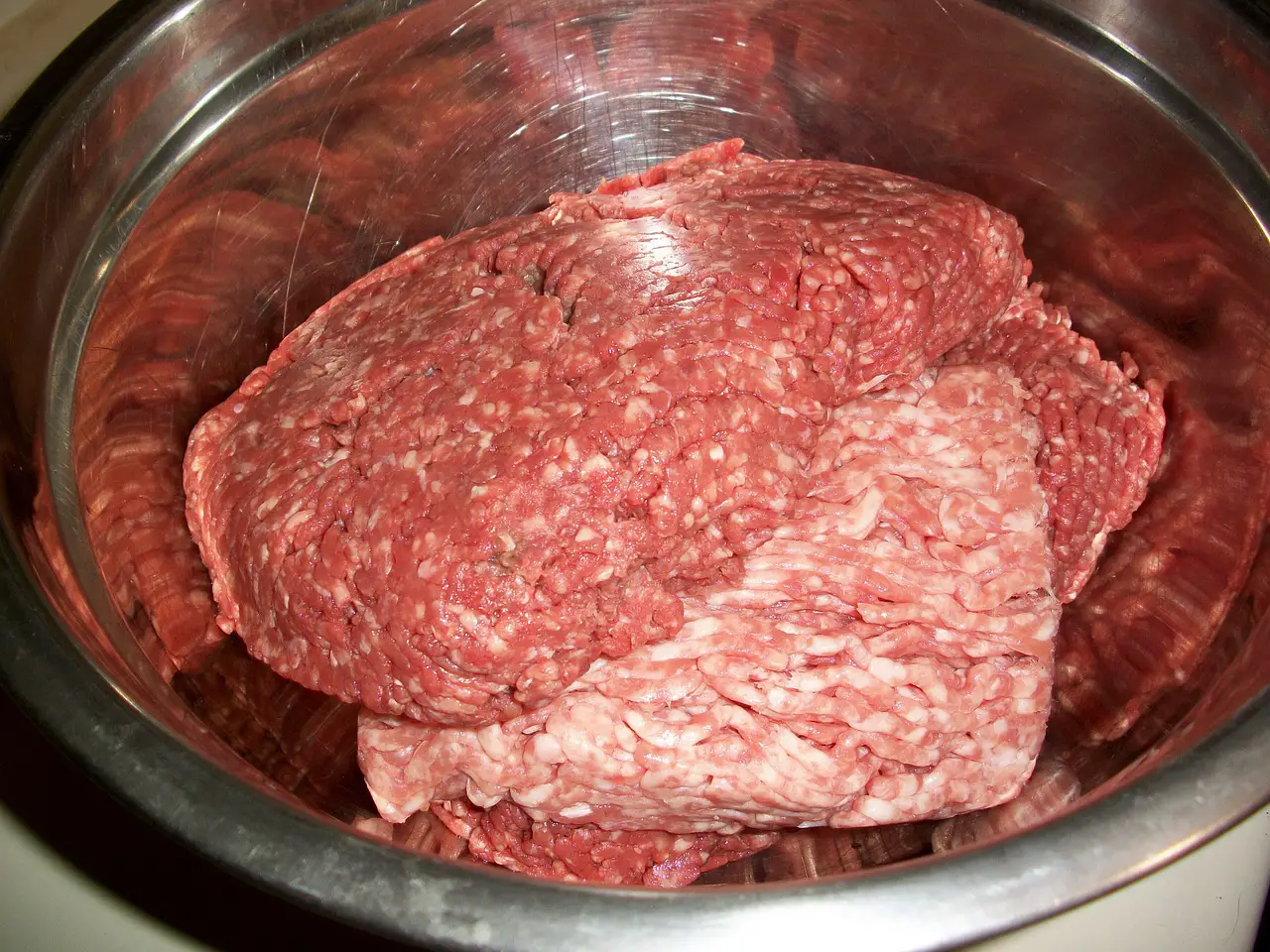Defrosting ground pork is essential to ensure the meat is properly thawed and ready for use. If ground pork is not properly defrosted, it can result in uneven cooking and potentially even food poisoning.
This article will discuss the best methods for defrosting ground pork and provide some tips and considerations to keep in mind. Whether you’re an experienced cook or a beginner in the kitchen, these steps will help you safely and effectively defrost ground pork for all your favorite recipes. So, let’s get started!

How to Defrost Ground Pork?
Defrosting ground pork can be trickier than other meats because of its small size and ground consistency. The refrigerator is the safest and most efficient way to defrost ground pork, but you can also use cold water or the microwave if you’re in a hurry.
If the pork isn’t completely thawed when it’s ready to cook, you can continue thawing it in the microwave or use one of the other methods described below. It is best to allow ground pork to thaw slowly in the refrigerator, as this is the safest and most effective method.
Method 1. Using a Refrigerator to Defrost the Ground Pork
Defrosting ground pork in the refrigerator is the safest and most effective method, allowing the meat to slowly and evenly thaw without the risk of bacterial growth. It’s important to note that the ground pork should be kept at a safe temperature (below 40°F) while it’s thawing in the fridge.
If the pork is not fully thawed when you’re ready to cook it, you can continue to thaw it in the fridge or use one of the other methods outlined above. Just be sure to handle the raw meat carefully and follow good food safety practices to avoid potential issues. Here’s how to defrost ground pork in the refrigerator:
- Remove the ground pork from the freezer and place it in a container or plate.
- Place the container or plate in the refrigerator.
- Allow the ground pork to thaw slowly in the fridge.
- This can take several hours to a full day, depending on the package size and the temperature of your fridge.
- Once the ground pork is fully thawed, it can be used in your favorite recipes.
Method 2. Using Cold Water to Defrost the Ground Pork
Defrosting ground pork using cold water is a quick method that can be used when you’re in a hurry, but handling the raw meat with care to avoid any potential food safety issues is important.
It’s important to note that the ground pork should be kept at a safe temperature (below 40°F) while it’s thawing in the water. Once it’s fully thawed, the pork should be cooked immediately or stored in the refrigerator for later use. Here’s how to defrost ground pork using cold water:
- Place the ground pork in a resealable plastic bag.
- Soak the bag in a bowl of cold water.
- To keep the water cool, change it every 30 minutes.
- Allow the ground pork to thaw in the cold water for about an hour or until it’s fully thawed.
Method 3. Using the Microwave to Defrost the Ground Pork
Defrosting ground pork in the microwave is a relatively easy process. The trick is to use the right settings to ensure safe, even defrosting. Defrosting ground pork in the microwave is not recommended as it can result in uneven thawing and may lead to some parts of the pork being overcooked while others are still frozen. Here’s how to defrost ground pork in the microwave:
- Place the ground pork in a microwave-safe container.
- Set the microwave to the “defrost” setting and heat the pork for 30 seconds.
- Check the pork frequently to ensure that it’s not starting to cook.
- Once the ground pork is fully thawed, it can be used in your favorite recipes.
Additional Tips for Defrosting Ground Pork
- Make sure to allow enough time for the ground pork to defrost. It’s best to remove it from the freezer the night before you intend to use it or at least several hours before you begin cooking. This allows the meat to defrost slowly and safely in the refrigerator.
- Please keep it safe: Cover the ground pork while it thaws to prevent it from absorbing odors or flavors from other foods in the fridge.
- Use the proper container: A large container holds the ground pork and any juices that may leak out.
- Washing raw pork is not recommended because it increases the risk of bacterial contamination. Instead, before cooking, pat the pork dry with a paper towel.
- Once the ground pork has thawed completely, it is critical to cook it to kill any harmful bacteria thoroughly.
- Make sure the meat has an internal temperature of at least 145°F by using a meat thermometer.
How Long Does Ground Pork Last in the Fridge?
The shelf life of ground pork in the fridge depends on how it has been stored and handled. If the pork has been properly stored in the refrigerator at a safe temperature (below 40°F) and handled cleanly and hygienically, it can last for about 2-3 days after it has been cooked or thawed.
It’s important to store ground pork in a clean and covered container in the refrigerator to prevent the growth of harmful bacteria. It would help if you also used a meat thermometer to check the internal temperature of the pork to ensure that it has been cooked to at least 145°F to kill any harmful bacteria.
Reference: Extension of the Shelf-Life of Fresh Ground Pork with Polyphosphates.
In fresh ground pork maintained at 2-4°C for six days, the antibacterial effects of 1.0% sodium acid pyrophosphate (SAPP) and sodium orthophosphate monobasic (ORTHO), either alone or in combination, were investigated. Meat microorganisms were less inhibited by adding a 0.5% SAPP/0.5% ORTHO mixture than by 0.5% SAPP alone. There was no relationship between soluble orthophosphate level in ground pork and bacterial inhibition.
Is it Better to Thaw Meat Slowly or Quickly?
It’s generally better to thaw meat slowly in the refrigerator, as this allows the meat to evenly and safely thaw without the risk of bacterial growth. Thawing meat slowly in the fridge also helps preserve the meat’s quality and taste.
On the other hand, thawing meat quickly using methods such as cold water or the microwave can result in uneven thawing and may lead to some parts of the meat being overcooked while others are still frozen.
This can affect the quality and taste of the meat, as well as increase the risk of bacterial contamination. In summary, it’s best to thaw meat slowly in the refrigerator to ensure that it thaws safely and evenly and to preserve the quality and taste of the meat.
How can you know if your Ground Pork has Gone Bad?
If you need clarification on whether your ground pork is still good to eat, it’s a good idea to use a meat thermometer to check the internal temperature. The pork should be cooked to an internal temperature of at least 145°F to kill harmful bacteria.
If you notice any of these signs or have any concerns about the safety of your ground pork, it’s best to throw it away to avoid any potential food poisoning. There are a few signs that you can look for to determine whether your ground pork has gone bad:
- Mold: If you notice any mold growing on the ground pork, it’s best to throw it away.
- Off odors: Ground pork that has gone bad may have a sour, rotten, or ammonia-like smell. If you notice any off odors when you open the package, it’s best to throw the pork away.
- Color changes: Fresh ground pork should be pink or light red. If the pork has turned gray or brown, it may be spoiled.
- Slimy texture: Ground pork that has gone bad may develop a slimy texture or a sticky film on the surface. If you notice any changes in the texture of the pork, it’s best to throw it away.
- Expiration date: Check the expiration date on the package to see if the pork is still good to eat. If it’s past the expiration date, it’s best to throw it away.
What Happens if you Eat Spoiled Ground Pork?
Eating sour ground pork can cause food poisoning, leading to various symptoms, including stomach cramps, nausea, vomiting, diarrhea, fever, and weakness. In severe cases, food poisoning can even lead to hospitalization and death. It’s important to handle raw pork carefully and follow good food safety practices to avoid potential issues.
This includes storing the pork in the refrigerator at a safe temperature (below 40°F), cooking it thoroughly to an internal temperature of at least 145°F, and not refreezing it once it has been thawed. If you suspect that your ground pork is spoiled, it’s important to throw it away immediately to avoid any potential food poisoning.
It would be best if you also washed your hands, cutting board, and other utensils that came into contact with the pork to prevent the spread of bacteria. If you experience any symptoms of food poisoning after eating ground pork, it’s important to seek medical attention as soon as possible.
Conclusion
In conclusion, defrosting ground pork is essential in the cooking process. It’s important to handle raw meat carefully to avoid potential food safety issues and ensure that it cooks evenly and tastes great. Following these tips and considerations, you can safely and effectively defrost ground pork for all your favorite recipes.
It’s always a good idea to plan and give yourself enough time to properly defrost the ground pork, as this will ensure that it is fully thawed and ready to be used in your recipes. Be sure to store the ground pork in the refrigerator at a safe temperature (below 40°F) and handle it cleanly and hygienically to prevent the growth of harmful bacteria and ensure that it tastes great every time.

